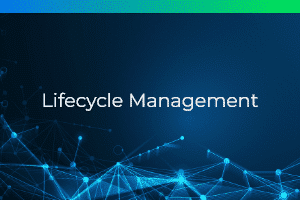What is lifecycle management?
The aim of lifecycle management is to support a product or system throughout its entire lifecycle in order to preserve and maximise its economic benefits.
The term lifecycle management can be applied to products or IT systems. Product lifecycle management refers to the entire service life of a product. The period extends from planning, design and development to production, sales, returns and maintenance. The disposal aspect is also taken into account by lifecycle management. Manufacturers are increasingly obliged to take over the disposal of their used products.
Lifecycle management for IT systems essentially consists of administration. All IT systems are subject to a lifecycle. It begins with the provision of resources, such as the creation of user accounts including access rights – known as provisioning. However, lifecycle management also monitors the entire operating time with all software updates and memory expansions through to decommissioning and deprovisioning.
Lifecycle management for IT systems fulfils the following functions:
- Set up and provision reliable and scalable systems
- Monitor and track assets and subscriptions
- Ensuring uniformity
- Decommissioning and deprovisioning
